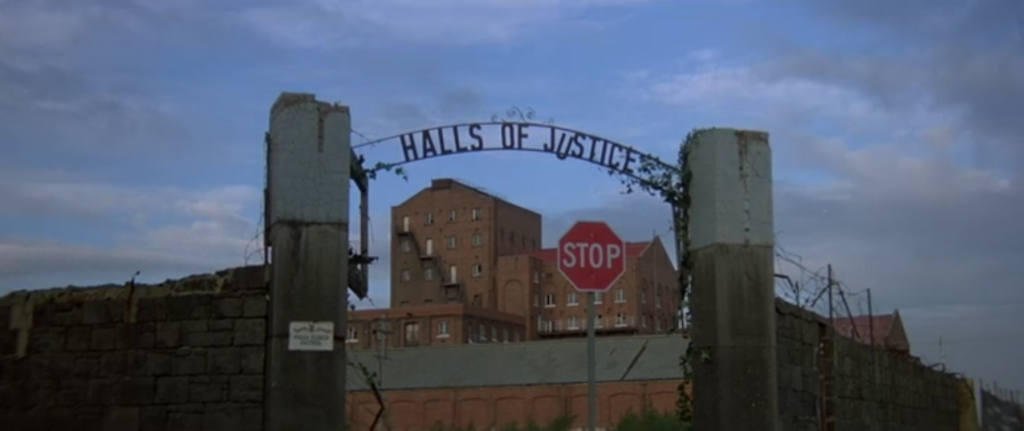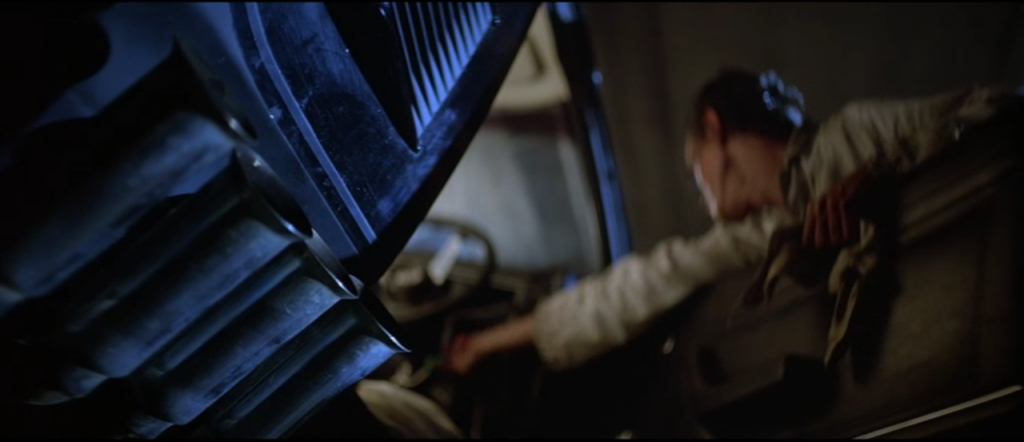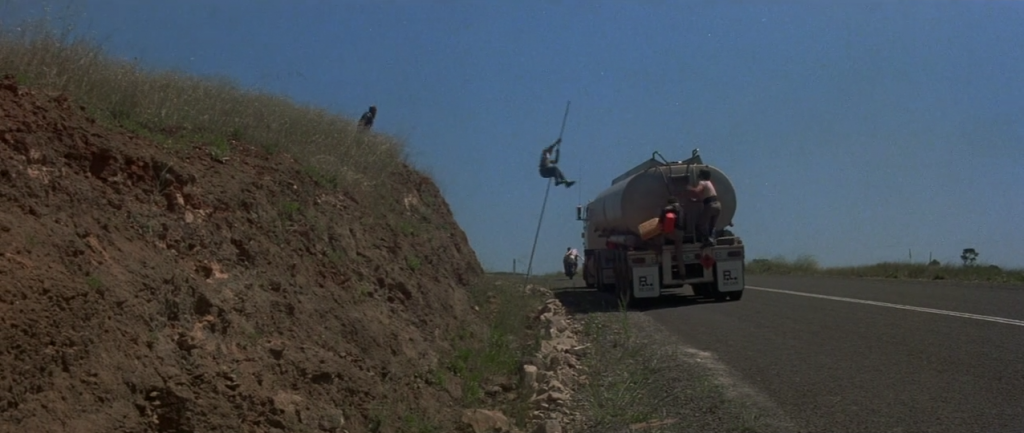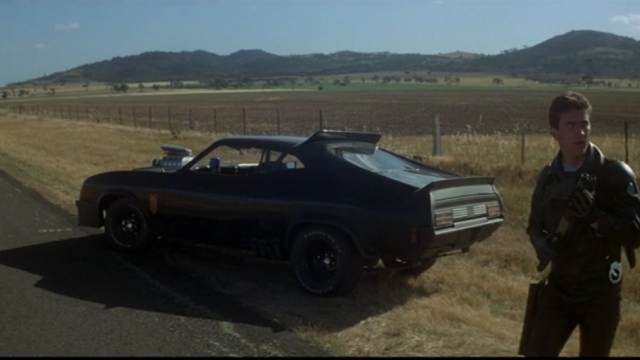In May of 2015, Mad Max: Fury Road debuted , reinjecting life into a franchise that had stalled out in 1985 with the third— and final — movie featuring Mel Gibson, Beyond Thunderdome. With a new lead playing the titular character, Fury Road sped ahead of critical expectations, with many praising the film’s world-building, its feminist ethos and, of course, its stellar action, removed from any greenscreen digital fakery.
As someone who had never seen a Mad Max film before, I was caught off-guard, giddy with the utter precision which director George Miller drove his well-calibrated machine. Here was a movie that didn’t just strip the older films for parts, but rebuilt it into something new, taking what he had learned from past works, refurbishing it until it gleamed.
I lost track of how many times I saw Fury Road in the theater, but I wouldn’t be surprised if it was thrice or more. It didn’t take me much longer to watch Road Warrior and Thunderdome, thanks in large part to a friend’s extensive VHS collection, meticulously put together by her father. Throughout both of his prior works, you can see Miller returning to familiar motifs and designs, twisting them further with each iteration.
As a result, it shouldn’t come as a surprise to see how starkly different Mad Max is to the later installments, while still maintaining the spark that would provide fuel for three more films. Released in 1979, the movie is unique for showing a world that isn’t amidst Armageddon or limping by in a post-apocalyptic stupor, but is instead on the brink of collapse.
The movie starts with a brief montage, showing the Australian wasteland, complete with a building whose signage appears ready to fall off. This may not be the same realm of Immortan Joe or Lord Humungus, but it’s getting closer. The only thing to ground ourselves is one line of text that appears on the screen, indicating how the film is set, “a few years from now…”

After the brief introduction, we’re off—quite literally—jumping into an extended opening chase between the ragtag police outfit Main Force Patrol and an escaped convict, Nightrider, someone who one patrolman diagnoses as a “terminal psychotic.”
Not that Nightrider’s (Vincent Gil) helping his case any, calling himself a, “fuel-injected suicide machine!” Even in Miller’s debut film, it’s clear he knew exactly what kind of world he was building with co-writer James McCausland, with plenty of shots of car engines, exhausts and squealing tires. As society crumbles, the only currency that has any weight is the vehicle you own. Maintaining it—as we see later with Max’s family—could mean the difference between life or death.

As bright yellow police cruisers accumulate behind Nightrider’s stolen car, we witness a series of spectacular crashes and spin-outs, something that might be unthinkable to any first-time feature director of today. Yet Miller had a background in such incidents. Working as an emergency room doctor in Sydney, he saw plenty of injuries and deaths, largely borne out of car crashes, according to the Australian film magazine Cinema Papers. It doesn’t take much to think of the cumulative effect all those procedures and operations had on him. As for the series’ preoccupation with automobiles, that appears to have come from the 1973 oil crisis, and the determination of motorists to keep their cars running, according to McCausland, in a 2006 essay for the Australian newspaper The Courier-Mail.
“A couple of oil strikes that hit many pumps revealed the ferocity with which Australians would defend their right to fill a tank. Long queues formed at the stations with petrol—and anyone who tried to sneak ahead in the queue met raw violence. … George and I wrote the [Mad Max] script based on the thesis that people would do almost anything to keep vehicles moving and the assumption that nations would not consider the huge costs of providing infrastructure for alternative energy until it was too late.”
While real-world crises and traumas informed aspects of the finished film, Miller still works on an action movie register, with Max Rockatansky’s introduction to the film approaching myth. We never see his face as we cut away from the opening chase, but he’s clearly a man of significance. It’s not until his partner (Steve Bisley) wipes out that we hear him talk, and only after do we see him join the chase, ending it quickly by forcing the crook’s car into a fiery explosion with an overturned truck. He gets out of the car after, and we finally behold the protagonist in full, star-is-made form, accomplishing the mission that others had failed.
Played by Gibson, Max at first seems like any number of loose-cannon cops, a role he himself put his stamp on in the Lethal Weapon series. The difference between the more contemporary movies and Mad Max is how no one seems to mind the vigilante tactics employed by Gibson and the rest of the force. The police chief himself (Roger Ward) puts it succinctly, “so long as the paperwork’s clean you boys can do whatever you like out there.”
On its surface, Mad Max appears to be solely a cop revenge thriller dressed up in a futuristic grunge outfit. That observation more or less holds, especially once we get introduced to his loving wife and their infant, destined to be roadkill, instigating Max to fully break down and seek revenge. If it weren’t for the sequels, one might be inclined to view this movie as a curiosity or precursor to the hypermasculine and hyperviolent era of action films that proliferated in Hollywood in the 1980s. Yet with the geographical landscape, muscle cars and Aussie slang not sounding incongruous for a futuristic setting, this movie has a unique vibe all its own, something that clearly inspired Miller to return to the well again and again.
One such example that echoes in his later work occurs late in the movie. Toecutter, as played by Hugh Keays-Byrne—himself a recurring actor in the Mad Max universe — steals gasoline from a moving truck. As we see him and his gang stealthily leap onto the back of the vehicle’s trailer or pole vault onto the top, it doesn’t take much to think of the group as a prototypical War Boy party, missing only the white body paint.

Mad Max, then, might be best viewed as an origin story. While the series has always played fast and loose with the character and the setting, there’s enough here for a viewer to get the whole picture. You can see how Max went from a relatively contented—if extreme—cop to a loner on par with Clint Eastwood and Toshiro Mifune’s Men with No Name.
While those two iconic characters may have come fully formed, Gibson and Miller needed a movie to figure out Max. He needed to get pulled out of his comfort zone and into the madness and promise of the world. As he tells his chief during a pivotal scene where he articulates his fears, he’s scared.
“It’s that rat circus out there. I’m beginning to enjoy it…Any longer out on that road and I’m one of them, you know? A terminal crazy…only I got a bronze badge to say I’m one of the good guys.”
While Max lost his badge in the sequels, he never lost his appeal. Near the end of the film, after taking out Toecutter and his gang, he handcuffs one of the remaining members to a totaled car leaking gasoline. He sets up a crude trap with the motorcyclist’s lighter before giving him a hacksaw, with two options: cut through his ankle in five minutes to live or die.
As Max walks away, we hear the gang member shout at him.
“You’re mad, man!”
True, but we wouldn’t have him any other way.

